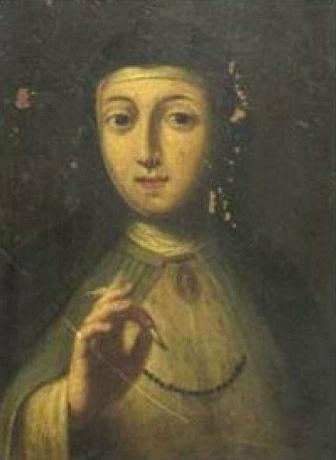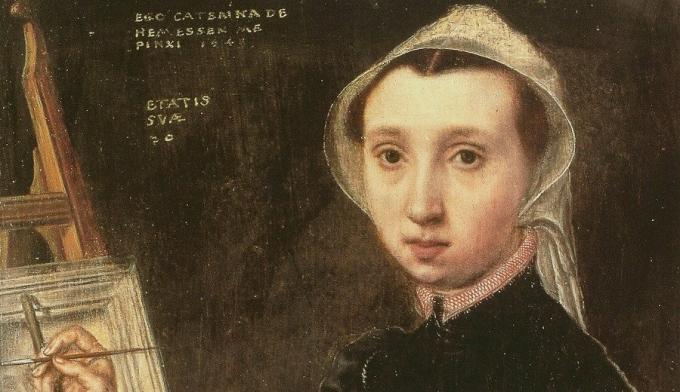5 female artists of the Renaissance
He Renaissance It is a very well-known era. Their artists are world famous, and would surely appear on any list of famous artists that we could imagine. But what about women?
In recent times, fortunately, the work and life of the distinguished women who masterfully dedicated themselves to art, and who are not precisely few, have begun to be rescued. In today's article we bring you 5 important Renaissance artists, which were admired and highly sought after in their day but, unfortunately, were forgotten over time. It is our (all) task to resurrect their names and return them to where they belong.
The 5 most important Renaissance women artists
The majority are painters, as they were trained in the workshop of their respective parents, who also dedicated themselves to painting. One of them, however, managed to find a place in sculpture, something rarer in the context of the time. Giorgio Vasari includes almost all of them in his Lives, which gives us an idea of how admired they were in their time. If you want to know them, don't stop reading.
1. Plautilla Nelli (1524-1588)
Real name Pulisena Margherita Nelli, she was the daughter of a rich fabric merchant living in Florence, who also dedicated himself to painting. At fourteen years old, Pulisena Margherita enters the convent of Santa Catalina de Siena, managed by the Dominican friars of San Marcos, and she receives the name Sister Plautilla. She would become prioress of the convent on several occasions and would be an excellent painter, absolutely self-taught..

The main models for her were the works of Andrea del Sarto (1486-1531) and, above all, Fray Bartolomeo (1472-1517). Plautilla dedicated herself to creating miniatures and large-format paintings, such as her latest work, The Last Supper, a colossal canvas executed around 1568 and currently exhibited in the Museum of Santa María Novella, in Florence. This is the first time in history that a woman has undertaken plastic work (at least, that she know) this biblical scene, which is treated with great restraint and a beautiful monumentality classic.
Plautilla also served as teacher to her monastery sisters, to whom she taught painting techniques. Her fame and her mastery led her to be sought after by many nobles and merchants in the city. In fact, she is one of the few women that Giorgio Vasari mentions in his Lives.
- Related article: "What are the 7 Fine Arts? A summary of its characteristics"
2. Sofonisba Anguissola (1530-1626)
Sofonisba Anguissola (on the cover) is probably one of the most remembered female artists of the Renaissance, despite the fact that, during numerous centuries, much of her work was attributed to male painters from the circle of Philip II, such as Juan Pantoja de la Cruz or Alonso Sánchez Coello. Fortunately, The exhibition dedicated to her by the Prado Museum in the 1990s recovered the authorship of a large part of the paintings of this exceptional artist., such as the famous portrait of Philip II that is preserved in said gallery, previously attributed to Coello.
Sofonisba's great natural talent is admired by Giorgio Vasari, who visits the Anguissola family and discovers the young woman's drawings. Her father, Amilcare Anguissola, an impoverished nobleman, has taught all his daughters how to paint; However, only works by Sofonisba and her younger sister, Lucía (1537-1565) are known. With a long and dynamic life (she died when she was ninety years old), Sofonisba became part of the court of King Philip II in 1559, thanks to the contacts that her talent has guaranteed her in the Italian courts (they say that even Michelangelo himself saw and valued her drawings). Thus, that year she settled in Madrid as lady-in-waiting to Queen Isabel de Valois, of whom she also made a splendid portrait, also preserved in the Prado, which she acts as pendant her or her husband's partner.
In 1560, the monarch endowed her with it so that she could marry Fabrizio de Moncada, the brother of the viceroy of Sicily. However, the marriage is short-lived; Once widowed, Ella Sofonisba returns to her native Cremona. On the return trip she falls in love with the ship's captain, Orazio Lomellino, who becomes her great love and her second husband. The couple settles in Genoa and Sofonisba establishes her studio in the city.
The painter's long life guaranteed that many new artists knew her work. Anton van Dyck, one of her most passionate admirers, came to visit her at her home in Genoa, a few years before the artist's death. And, of course, Giorgio Vasari remembers her in his Lives, where he mentions with admiration her great talent and her beautiful work.
- You may be interested: "The 8 branches of the Humanities (and what each of them studies)"
3. Lavinia Fontana (1552-1614)
Lavinia was, along with Sofonisba, the most recognized and sought-after painter of the 16th century.. She was educated, as was usual for women artists, in the workshop of her father, the painter Prospero Fontana. From him she took the influence of mannerism, although her work is also notably inspired by that of her colleague Anguissola. Lavinia's first signed work is the famous self-portrait of 1575, in which she appears elegantly dressed playing the spinet.

At the age of twenty-five she married an assistant in her father's workshop, Giovani Paolo Zappi. From then on, the husband abandons his own artistic career to dedicate himself fully to that of his wife, to the one who helps in the workshop that she directs (she is, by the way, one of the first women in do it). The marriage was fruitful, as they had no less than eleven children, but their comfortable economic situation, due to the great recognition of Lavinia's work, allowed them to live comfortably.
Lavinia was official painter to Pope Clement VIII and, upon his death, to his successor Paul V.. She settled with her family in Rome and there she carried out a notable professional activity, which led her to be recognized and sought after by the city's upper echelons. Her fame was such that she entered the Academy of San Lucas in Rome, something really strange for a woman of the time. In addition to religious work, Lavinia dared to create a genre that was completely forbidden to female hands: mythological nudes. In this sense, one of the best examples of her is Minerva dressing as her, from 1613, preserved in the Borghese Gallery in Rome.
4. Catharina van Hemessen (1528-1587)
This splendid portraitist is especially famous for having made the first self-portrait in history in which the painter portrays herself working at the easel; It is, of course, a way to vindicate her work as an artist.

A signature appears on the canvas, which reads the following: Ego Caterina de Hemessen me pinxi 1548 etatis SVA 20; that is, “Catharina van Hemessen painted me in 1548 at the age of 20.”
We know that, like many painters, Catharina trained in the workshop of her father, the painter Jan Sanders van Hemessen, from Antwerp.. At a very young age she moved to the court of Mary of Hungary and became an official portrait painter. However, after her marriage to the organist of Antwerp Cathedral, Christian de Morien, the paintings signed by her disappear, which leads us to think that, unfortunately, Catharina abandoned her profession when get marry.
5. Properzia de Rossi (1490-1530)
Although women painters were not as uncommon in the Renaissance as we might think, in the case of female sculptors the number decreased drastically. One of the exceptional cases is that of Properzia de Rossi, one of the first women sculptors of the Renaissance and the first to sign a work of hers for a church. This is the famous bas-relief of Joseph and Putiphar's wife, destined for the church of San Petronio in Bologna and currently kept in the church's Museum.

Properzia was the daughter of a Bolognese notary, but from a very young age she began studies with the engraver Marcantonio Raimondi, responsible for some of the engravings on copies of Raphael that circulated so. Properzia's first fame came from her small sculptures made with fruit bones, a true prodigy of art that put her on the lips of all the circles of Bologna.. Especially notable from this period is the beautiful Crucifixion that the talented artist carves into a peach pit.
Around 1520, Properzia was called by wealthy Bolognese families to work for them. She also receives ecclesiastical commissions, such as the aforementioned relief from the church of San Petronio, as well as the commissioning of a decorative program for the altar of Santa María del Baraccano in Bologna. Sadly, despite the success and recognition she gained from her (Vasari also quotes her in his Lives), Properzia died before she was forty years old, forgotten and in the most absolute misery.
